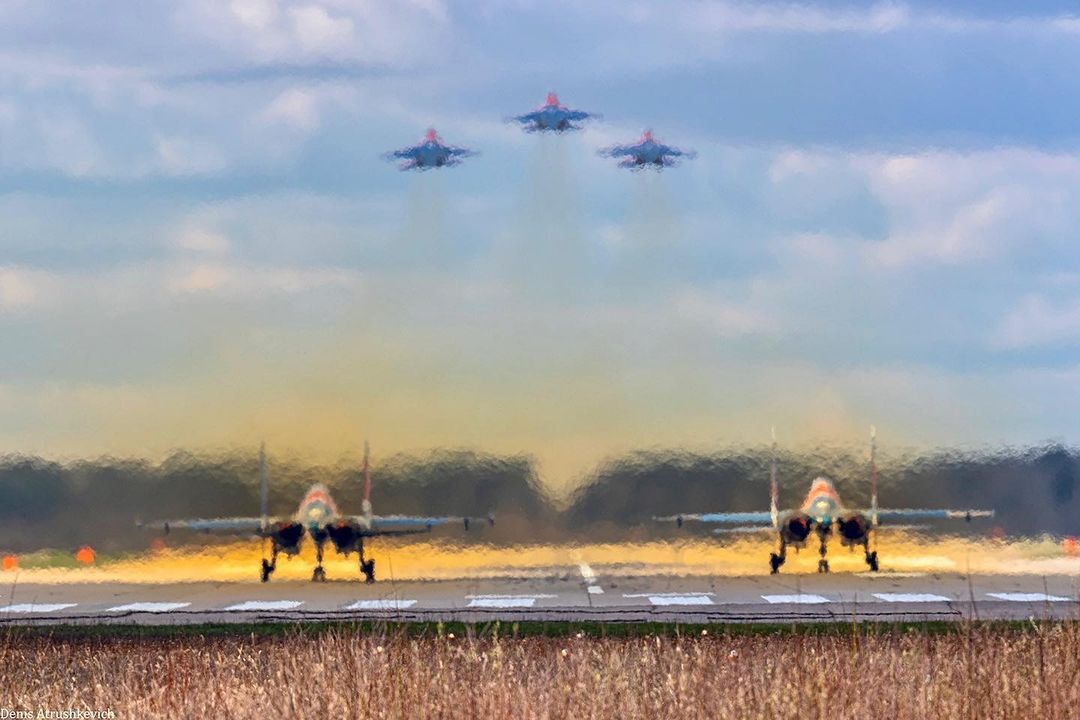It is true that the F-16 is a great fighter aircraft since it has a low cost, high performance, a stunning look, a long life, and is simple to maintain.
When it comes to the F-16 Fighter, I feel that many people would hold it in their hearts to be the “Most classic fighter.” Even though the f-35 and f-22, both fifth-generation aircraft, have been fully operational in the United States Air Force for more than a decade, the F-16 continues to serve as the primary fighter for the Air Force. This has occurred despite the fact that more than 40 years have passed since its initial induction in 1978. What are the benefits of the F-16 fighter aircraft that have made it such an evergreen tree in the eyes of the United States Air Force that they do not want to retire it?
According to relevant information, to this day, The USAF operates 1,245 F-16s with 701 with active forces, 490 with Air National Guard and 54 with Reserve, and the air forces of 25 countries and regions have 2,000 f-16s in service. From the first f-16 to today, the united states has produced more than 4600 f-16s, and the f-16 is already the world’s largest number of fourth-generation fighters produced and equipped.
The f-16 block 72 fighter introduced by US may have a lifespan of more than 60 years, making it the longest survival fighter in human history. The f-16 block 72 fighter jet uses new advanced technology systems for military aviation such as AESA radar, data links, embedded combat systems, etc., and its production may exceed 4,500 aircraft. It will replace the f16 a/b and f16 c/d fighters currently equipped by u.S. Allies.
The F-16 has a cropped-delta wing incorporating wing-fuselage blending and forebody vortex-control strakes; a fixed-geometry, underslung air intake (with splitter plate) to the single turbofan jet engine; a conventional tri-plane empennage arrangement with all-moving horizontal “stabilator” tailplanes; a pair of ventral fins beneath the fuselage aft of the wing’s trailing edge; and a tricycle landing gear configuration with the aft-retracting, steerable nose gear deploying a short distance behind the inlet lip.
There is a boom-style aerial refueling receptacle located behind the single-piece “bubble” canopy of the cockpit. Split-flap speedbrakes are located at the aft end of the wing-body fairing, and a tailhook is mounted underneath the fuselage. A fairing beneath the rudder often houses ECM equipment or a drag chute. Later F-16 models feature a long dorsal fairing along the fuselage’s “spine”, housing additional equipment or fuel.

The F-16’s engine thrust-to-weight ratio is 1.11, with a climb rate of 300 m/s. The f16’s radar is constantly improving, and its radar has improved detection accuracy and enhanced the ability of medium-range air combat. Coupled with the f16 fighter’s continuous improvement of the aim 120 air-to-air missile, the advantages of the f-16 fighter in actual combat are becoming more and more obvious.

Another highlight of the f-16 is that it is a multi-role fighter. In the positioning of US air force, the f-15 and f-16 go high and low, the f-15 is mainly used for air superiority, and the f-16 is a multi-role fighter, which can be used for both air superiority and ground attack. For example, in the 1981 air strike on the Iraqi nuclear reactor operation, the israeli air force dispatched eight f-16 fighter jets, supported by six f-15s, flew to the Iraqi nuclear reactor, after several aerial refueling, F-16 flight distance reached 1300 kilometers. Eventually, the Iraqi nuclear reactor was successfully blown up.
In the 1982 battle of the Bekaa valley, the Israeli air force’s F-16 fighter jets and F-15s fought together, not only shooting down 82 fighters of the Syrian air force but also destroyed 228 surface-to-air missiles of the Syrian military. After the outbreak of the gulf war in 1991, the F-16 fighter entered its peak era. At that time, the u.S. Air force put more than 250 f16 fighters into the front line, and the F-16 fighters flew more than 13,000 sorties in total, with an average of more than 530 missions per aircraft, without a single loss.

The u.S. Air force’s F-16 and other military aircraft together carried out combat tasks such as competing for air supremacy, air shielding and suppressing the iraqi army’s anti-aircraft weapons, and became the main model of the us air force in the gulf war. In the 1999 kosovo war, F-16 fighters carried out various air combat operations such as suppressing enemy air defense systems, offensive air combat, defensive air combat, etc.

The f16 did an excellent job of all kinds of wars from the end of the cold war to the end, winning widespread praise from the U.S. Air force and air forces around the world. Because the F-5 fighter jet is too expensive, F-16 fighter jets will be in service for a long time in the future, and even the “Spectacle” of the united states’ sixth-generation aircraft and F-16 fighting together will appear. The story of this ageless fighter is far from over.For more military international related facts, as well as opinion comments, please leave a message in the comment area to discuss together.